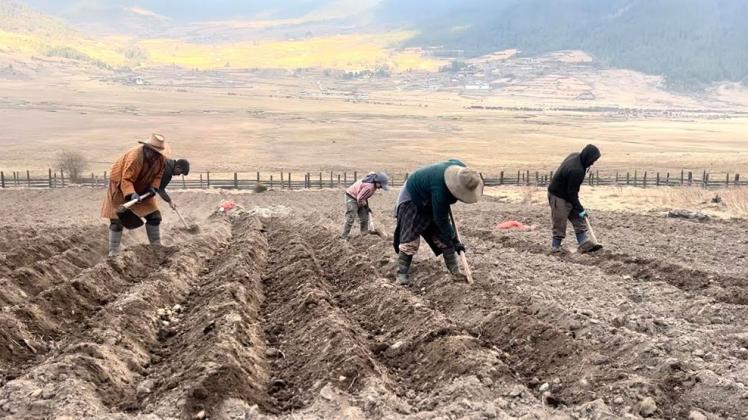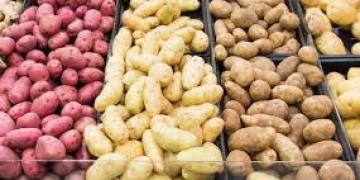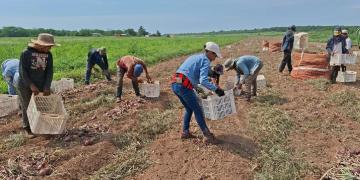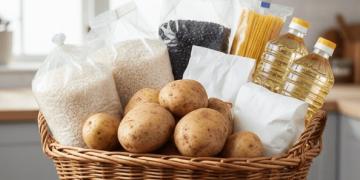Butan: Dilemma facing potato farmers
Valley’s soil quality is deemed healthy, yet concerns arise over unchecked chemical fertiliser usage Yangyel Lhaden

Gangtey-Phobjikha valley, Wangdue, March 7: It is a vibrant and bustling season, the final stretch of potato cultivation. The tractors rumble as villagers, sporting sun caps and wellington boots, head out to their fields. Women and men nurture their plots with practiced hands, plowing and planting potato against the picturesque backdrop of the valley.
Potato is the primary cash crop for these villagers here—their livelihoods depend entirely on it. In Wangdue, potato production has consistently reached new heights, making it the top-ranking crop in the country by production. However, sustaining this success requires annual applications of chemical fertilisers.
The government introduced chemical fertilisers in the 1960s to boost crop yield. However, over the years, concerns have been growing regarding the proper use of fertilisers. People here have begun experimenting with dosages, opting to apply them based on a blend of traditional knowledge and affordability.
Between 2020 and 2021, Wangdue got the largest allocation of chemical fertilisers, amounting to 850.63 metric tonnes, representing 24 percent of the total distribution nationwide. However, detailed data on individual farmers’ fertiliser usage remains obscure. Farmers generally do not openly share this information.
Mangmi of Phobjikha, Thinley Dorji, said that farmers often try to outdo each other in the use of chemical fertilisers. “At the gewog level, we try to encourage farmers to lessen their reliance on chemical fertilisers.”
Dawa Tshering, a farmer, tends to his one-acre farm where he grows potatoes. “If we do not apply chemical fertilisers, potatoes grow only to the size of a berry.”
On his farm, he uses both chemical and organic fertilisers, depending on his financial capability. However, he does not measure the quantity that is applied.
Dawa Tshering too holds the common belief among many farmers here that increasing the use of chemical fertilisers results in higher crop production. Despite this conviction, financial limitations restricted him this year. He could only afford to apply 10 bags of chemical fertilisers, each weighing 50kg, alongside as much organic manure.
Discontented with the sales from past year’s harvest, Dawa Tshering contemplates his usual method of mixing Suphala and Single Superphosphate (SSP) fertilisers. Typically, he combines a total of 20 bags, each weighing 50 kg. “I’ve always stuck to 20 bags; that’s my threshold,” he says.
Soil quality and chemical fertilisers
While the precise quantity of chemical fertilisers applied in the two gewogs remains uncertain, recent soil quality assessments conducted by the National Soil Services Centre (NSSC) indicate favourable soil conditions. However, the results reveal an anomaly: the soil in Gangtey is found to have phosphorus levels surpassing the acceptable range.
Chemical fertilisers commonly applied in potato farming provide three vital nutrients to the soil: nitrogen, phosphorus, and potassium.
This year, farmers have been supplied with SSP fertilisers, which they typically use with a reduced concentration of phosphorus. “Potatoes require less phosphorus compared to other nutrients, leading to an accumulation of phosphorus in the soil,” as noted by an expert. “The extra phosphorus in the soil could cause leaching and be washed away during soil erosion.”
The expert credits farmers for using of both organic and inorganic fertilisers for good soil quality. Inorganic fertilisers provide immediate nutrients, while organics boost soil microbes and slowly release nutrients, enhancing soil quality.
Specialist III with NSSC, Suraj Chhetri, said: “Fertilisers are like food given to plants to supplement the nutrients that the soil lacks and needs. Both chemical and organic fertilisers, when applied in the appropriate and recommended amounts, provide benefits to the plant and do not pose harm to human health.”
However, he voiced concern that applying fertilisers without prior soil testing could result in either under-fertilisation or over-fertilisation of soil which can lead either to subpar crop growth and yields or the buildup of nutrients in the soil, triggering leaching. The latter can pose environmental risks.
Sole and continuous reliance on chemical fertilisers, experts warn, can lead to hardening and degradation of soil quality over time. Suraj Chhetri said: “The application of chemical fertilisers beyond what plants can absorb may result in additional greenhouse gas emissions, intensifying the effects of climate change.”
Programme director of NSSC, Tashi Wangdi, said that not many farmers are keen on testing their soil. “We advocate for Integrated Plant Nutrient Management to enhance soil health to ensure that chemical and organic fertilisers complement each other. Our approach is aimed at improving soil quality through the use of enhanced farmyard manure.”
Tashi Wangdi said that soil needs vary even within the same vicinity, emphasising requirement of personalised soil testing to identify nutrient deficiencies accurately. “Simply increasing chemical fertiliser usage does not guarantee higher yields,” he said. “We will soon distribute rapid soil test kits to farmers for informed nutrient application so that they are not burdened with using more chemical fertilisers, which could strain their finances.
The success of this initiative, however, hinges on robust advocacy and awareness campaigns.
Potato business, a game of chance?
For the past three years, farmers of Phobjikha and Gangtey have been grappling with losses due to the declining prices of potato in the market, according to the locals. Despite this challenging situation, every year, fuelled by the hope of recouping their losses and anticipating a potential increase in market prices, farmers keep at it often resorting to borrowing money to finance the application of chemical fertilisers.
Thinley Dorji underscored the precarious situation of potato business where farmers are facing significant challenges in merely breaking even, let alone making a profit. “When a bank ceased offering seasonal loans, it caused widespread panic and hardship among the farming community.”
Last year, a farmer in Phobjikha who adopted cost-saving measures such as minimising chemical fertilisers, reducing labour costs, and used his own potato seeds, managed to scrape together a modest profit of Nu 20,000. He highlighted the challenges of affording chemical fertilisers with such narrow profit margins, particularly when considering the struggles of fellow farmers who invested more but failed to yield any returns.
The widely used chemical fertiliser by farmers, SSP, is priced at Nu 3,016 per packet.
Locals reminisce about a time when the potato business flourished, enabling farmers to afford luxuries like building houses.
“Potato is our lifeline; without them, we have nothing,” said Tandin Wangchuk, 53, from Gangtey. “In the past, we used to grow buckwheat and millet, but they brought in only a few thousand.”
The situation has reached a point where some farmers are on the verge of abandoning potato farming altogether.
Tshering Delkar from Gangtey has leased out her one-acre plot. “With continuing losses, I can’t depend on the potato business anymore. But there are still those who are committed to growing potato.”
Tandin Wangchuk owns one acre of land and has leased four acres of land at the rate of Nu 4,000 a year.
Upon returning from Phuntsholing after selling his potatoes, Tandin Wangchuk found himself deeply worried, having earned only Nu 600 for his efforts. “After factoring in expenses and Nu 360 for transportation per sack of potatoes, we could sell potatos for Nu 200 per sack.”
Without government support, farmers are left to fend for themselves, Tandin Wangchuk said. “If the government truly wants to promote organic farming, it should help farmers find markets with fair prices or lower cost of chemical fertilisers.”
“What other options do we have?” asked Tandin Wangchuk, his voice tinged with concern. With hopes intertwined with worry, farmers like Tandin Wangchuk persist in tending to their potato fields, navigating the uncertain future with resilience and determination.
Fuente:




